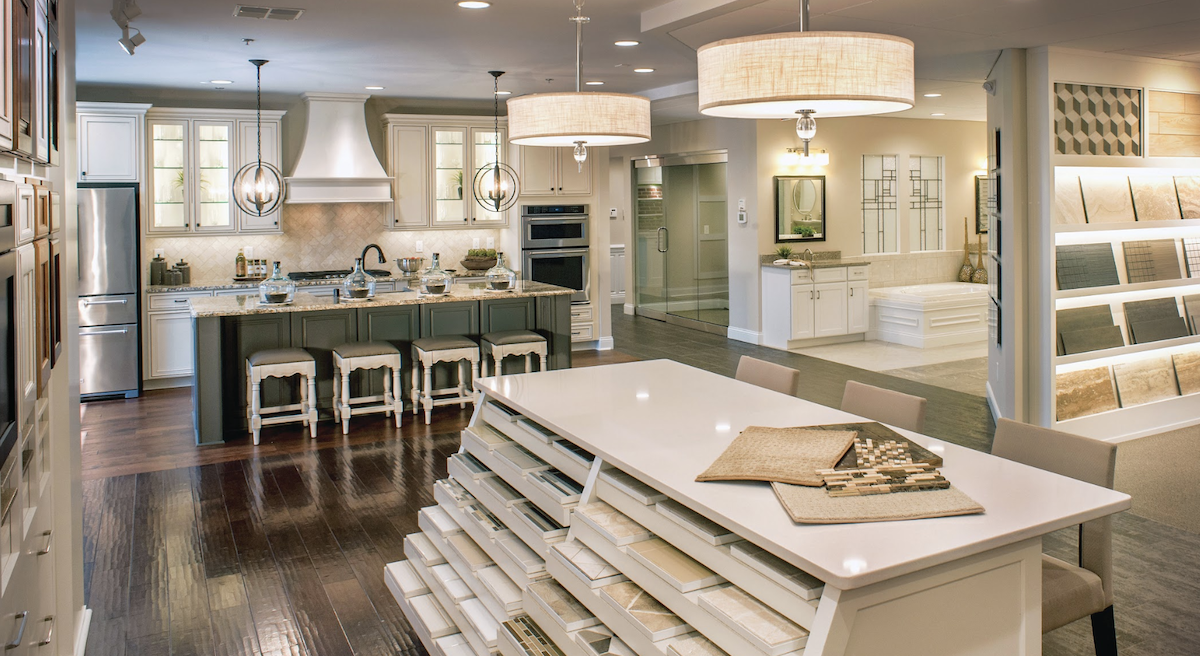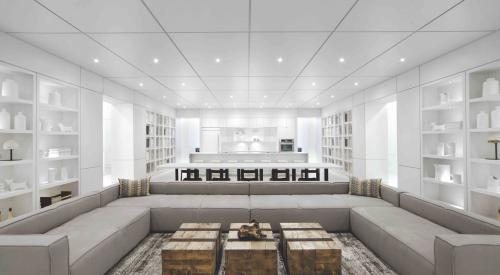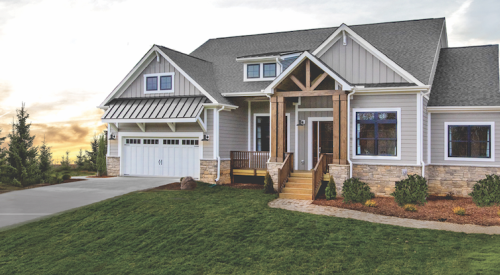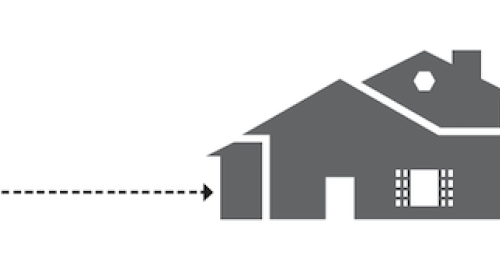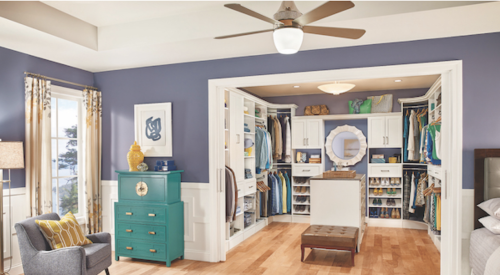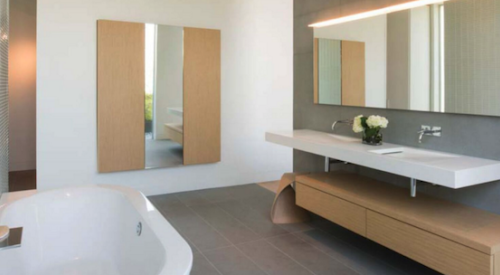Consumers are exposed to compelling retail environments every day. Starbucks, for example, offers multiple choices in a comfortable setting that invites customers to linger over a latte while perusing their laptops. While selling coffee isn’t exactly akin to selling homes, there’s an important lesson here: A design studio must support the customer’s desire to create a uniquely personalized home. That means providing a comfortable environment that educates buyers about products and materials and reduces the stress of the selection process.
THINK LIKE A RETAILER
Builders need to think of themselves as retailers, says Jane Meagher, president of Success Strategies, in Manalapan, N.J. For the last 15 years, Meagher and her colleagues have helped home builders of all sizes create new design studios, train staff, and develop product and pricing strategies.
The days when a “selection center” consisted of carpet samples in a model-home garage are, thankfully, on the decline. Now that the housing industry has emerged from the downturn, flashy, trendy design studios are becoming more common. But a design studio needs to be smart as well as pretty, Meagher says.
“A smart design studio understands consumer purchasing psychology and takes into account proven retail principles,” she points out. “It seizes the builder’s power to influence and guide customers in a way that helps them make quicker and easier decisions. It’s about providing tools to facilitate decision-making.”
UNDERSTANDING DECISION-MAKING
Meagher picks out two components in decision-making: comprehension and preference. Comprehension is extremely taxing because buyers often struggle to understand the choices in a given
product category and compare and contrast the attributes.
“Preference is when the attributes are known,” she says. “The customer is clear about the choices in front of them and can just choose what they prefer. We provide all kinds of tools that reduce comprehension time so buyers can focus on the more enjoyable emotion and task of preference.”
For example, fireplace displays typically have small corner mantelpieces stacked on a wall, but that doesn’t help buyers visualize how the fireplace will look in their living room. Meagher
recommends building a much larger sample or even the entire mantel, complete with surround and hearth.
“The displays that Jane has introduced in our design studios have helped facilitate the customer experience,” says David Metz, vice president of national purchasing and operations for Drees Homes, in Fort Mitchell, Ky. “She’s very focused on sight lines and making sure we’re always putting our best foot forward. As soon as customers walk in, we start pulling on their emotional strings.”
REINFORCE YOUR BRAND
Denver-based Mandil Inc., is a group of architects, interior designers, and color experts that offers design-studio expertise in addition to designing homes and commercial spaces. The company
 recently worked with Wayne Homes, an on-your-lot builder based in Uniontown, Ohio, on two new design studios. The company has a total of nine studios spread across five states (Indiana, Michigan, Ohio, Pennsylvania, and West Virginia).
recently worked with Wayne Homes, an on-your-lot builder based in Uniontown, Ohio, on two new design studios. The company has a total of nine studios spread across five states (Indiana, Michigan, Ohio, Pennsylvania, and West Virginia).
“Wayne’s design studios are a three-dimensional manifestation of their brand,” says founder and managing principal Eric Mandil. “They’ve put together a catalog of parts that works with their price point.” (The average price of a Wayne home, excluding land, is about $220,000.)
Wayne’s new design studios, Mandil says, have good bone structure and good lighting. “We’ve tried to rebrand so that it feels like one store or one builder rather than a trade show. For instance, ‘This is Wayne, but it’s Wayne by Pella or Wayne by Aristokraft.’ It’s a repackaging of each manufacturer so that it works as a collection for Wayne Homes.”
There’s a continuity across all of the design studios that reinforces the builder’s brand. “The Columbus studio might be laid out a bit differently than the one in Sandusky, but buyers will get the same feel, the same process, the same customer experience,” says Maurie Jones, vice president of marketing. “Even our marketing and advertising materials have that same feel.”
The new design studios are light-years away from the older ones, she says. “It used to be just a room full of products. Now we’ve created interesting spaces where [buyers] want to sit and work with our customer consultant for longer periods of time. There’s a fireplace with leather chairs around it and a kitchen vignette where people can gather around the table.”
Mandil advised Jones to allocate the most important display space to upgrades rather than included features. For instance, the standard light fixture is displayed in a less prominent location so that buyers have “something to aspire to,” Jones says.
 Wayne Homes, an on-your-lot builder in Uniontown, Ohio, turned to Mandil Inc. for advice on streamlining offerings and strengthening its brand message. The result is a cohesive retail feel, rather than a trade show, says Mandil’s founder and managing principal Eric Mandil.
Wayne Homes, an on-your-lot builder in Uniontown, Ohio, turned to Mandil Inc. for advice on streamlining offerings and strengthening its brand message. The result is a cohesive retail feel, rather than a trade show, says Mandil’s founder and managing principal Eric Mandil.
STARTING FROM SCRATCH
GHO Homes, of Vero Beach, Fla., didn’t have a design studio or even a design consultant until Nancy Villafane came onboard three years ago. “The salespeople were doing color selections, which really wasn’t their forte, with the buyers, and that took them away from what they do best,” Villafane says.
While working out of a model home, Villafane redid a space where small samples were leaning up against the wall, making it more appealing with larger samples. She photographed homes at closing and created an online catalog with images of products that weren’t shown in the model. Eventually, GHO president Bill Handler gutted an existing space to create the current 4,500-square-foot design studio.
“As far as I know, GHO is the only builder in this market that has a design studio of this magnitude,” Villafane says. “Even builders in West Palm Beach don’t have anything as intricate and detailed as ours.”
GHO built approximately 150 homes in 2015—a 20 percent increase from year to year over the last three years, she says. Prices range from the high $200,000s to the high $700,000s.
Typically, suppliers and vendors contribute products to a builder’s design studio. The outlay on the builder’s side is primarily in renovating or building out the actual space. Vendors agree to alert the builder when products need to be updated. “Whenever there’s a change, they’re out here within a couple of weeks to update the displays,” says Wayne’s Maurie Jones.
Big national builders such as Drees negotiate contracts with vendors stipulating that they must supply product for design studios. Depending on the vendor, they provide the product and, in some cases, the displays as well, Metz says.
BY APPOINTMENT ONLY
Bay to Beach Builders, of Greenwood, Del., collaborated with Meagher on a 2,700-square-foot design studio in the basement of its model home. Company owner Deric Parker says that customers aren’t allowed to leave until they’ve toured the studio as well as the model. “Design studios aren’t very common in our marketplace, especially for an on-your-lot builder that does 40 to 50 homes a year. Customers who have been shopping the competition are kind of blown away by it,” Parker says.
He thinks the by-appointment-only approach to design studios is a missed opportunity for builders to use studios as a sales tool. Sales of options have increased at least 40 percent since Bay to Beach’s design studio opened.
At the other end of the spectrum, Drees has 10 design studios around the country—one for each division. Most have been incorporated into division offices. They range from 2,000 to 5,900 square feet. “There’s a lot of science that goes into design studio displays now,” says Metz, adding that the displays speed up the selection process and help consultants demonstrate product features and benefits. Over the last two years, Drees has made a significant investment in building new design studios and upgrading existing studios. This has enabled the company to reinforce its tagline, “Custom Homes Made Easy.”
The bottom line, Meagher says, is that builders must believe in the power of influence. “When we decrease the comprehension time and elevate the perceived value of the products—and create an experience where we manufacture desire for them—it’s unbelievable the additional investment that buyers will make in their homes,” she says.
 A bathroom vignette in the GHO Homes studio almost literally immerses buyers in a spa experience. For design consultant Nancy Villafane, the biggest benefit is that she can demonstrate the benefits of different products side by side. “I can show a drawer with dovetail construction and a soft-close drawer next to a drawer that doesn’t have those features,” she says.
A bathroom vignette in the GHO Homes studio almost literally immerses buyers in a spa experience. For design consultant Nancy Villafane, the biggest benefit is that she can demonstrate the benefits of different products side by side. “I can show a drawer with dovetail construction and a soft-close drawer next to a drawer that doesn’t have those features,” she says.
 GHO’s well-organized, attractive design center creates a welcoming place for homebuyers to make their selections. There’s plenty of circulation space as well as work space and areas for family members to relax.
GHO’s well-organized, attractive design center creates a welcoming place for homebuyers to make their selections. There’s plenty of circulation space as well as work space and areas for family members to relax.
 Bay to Beach Builders makes sure that customers take a tour of the design studio in the basement of its model home. “Once people tour the model and we take them down and show them the studio, it becomes more clear to them that buying a home doesn’t have to be a stressful experience,” says company owner Deric Parker.
Bay to Beach Builders makes sure that customers take a tour of the design studio in the basement of its model home. “Once people tour the model and we take them down and show them the studio, it becomes more clear to them that buying a home doesn’t have to be a stressful experience,” says company owner Deric Parker.
